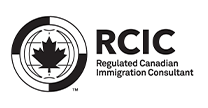For the first time ever, the spotlight is on Express Entry candidates with experience in transport occupations. Recognizing the urgent need within this vital sector, the latest draw specifically selected candidates from this background.
Why Transport Occupations?
Transport plays a pivotal role in Canada’s economic framework. According to the Minister of Transport, Pablo Rodriguez, “The transportation sector is at the heart of our economy. For smooth functionality, we must champion the individuals ensuring the safe movement of people and goods.” Rodriguez emphasizes that this new drive is a two-pronged strategy: addressing an imminent skills shortage and inviting adept individuals to the Canadian workforce. Roles such as truck drivers, pilots, aviation mechanical engineers, and seafarers are indispensable to Canada’s robust economy and the day-to-day lives of its residents. This move aims to strengthen Canada’s economic fabric and fortify its supply chains. This specific targeting comes after an increased number of Express Entry draws this summer. The reason? The debut of category-based selection rounds. Though a recent pause since August 15 left many wondering, with no explanation given for the hiatus.
Decoding Express Entry: Express Entry stands as the helm for three of Canada’s prime economic immigration avenues: the Federal Skilled Worker Program, the Federal Skilled Trades Program, and the Canadian Experience Class. While each program has its distinct eligibility criteria, they all employ the Comprehensive Ranking System (CRS). The CRS assesses and ranks candidates based on key personal attributes such as language proficiency, age, professional exposure, designated occupation, and academic achievements. Naturally, higher CRS scores improve one’s chances of receiving an invitation to apply for permanent residency. Interestingly, a provincial nomination acts as a wild card. Candidates with such a nomination under the Provincial Nominee Program (PNP) are awarded an extra 600 CRS points, a significant advantage given that the typical CRS score requirement fluctuates between 350-550.
Understanding Category-Based Selection:
On May 31, IRCC rolled out six novel categories eligible for the Express Entry draws. Among these, one focuses on French-speaking candidates, while the rest center on candidates with expertise in healthcare, STEM fields, trades, transport, and agriculture & agri-food. The first of these category-specific draws, focusing on healthcare professionals, took place on June 28. Draws for STEM professionals, trades, and French-proficient candidates have also been conducted since.
To be eligible for an ITA under category-based selection, it’s imperative for candidates to be part of an Express Entry program. Achieving a high CRS score remains crucial, as candidates continue to be assessed in comparison to their peers. The introduction of these new categories aims to address pressing job gaps in Canada’s labor market, reinforcing its economic backbone. These categories have been curated through collaborative discussions with provincial governments, business entities, and other IRCC associates. For individuals eyeing a future in Canada, particularly those with a background in the transport sector now might just be the perfect time to consider the Express Entry pathway.
For more insights and updates, stay tuned to [GuideMeImmigration.com](https://guidemeimmigration.com/).







